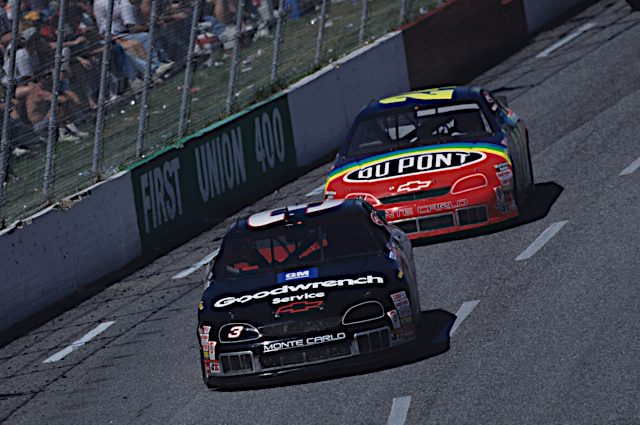Japan’s motorsport history is like an iceberg, from which Takuma Sato and Kamui Kobayashi stand out above the waves.
Just below the surface of those waves, less visible to the outside world, are Super Formula and SuperGT. Japan’s answer to F2 and the GT3 class.
Further down, where sunlight is more scarce, are the All-Japan Road Racing Championship and D1GP, a motorcycle and drifting series, respectively.
Just a bit further down, toward the bottom of the iceberg, is a three-year period of NASCAR racing in Japan.
Yes, Japan.
Japan doesn’t scream NASCAR, even with the American influence that took hold in Japanese culture following the second World War. Fuji Speedway was initially planned to be built as a Talladega-style superspeedway by the Japan NASCAR Corporation, before funding dried up and the project was taken over by Mitsubishi in 1965.
Fuji was completed as a permanent road course, and the idea of NASCAR in the land of the rising sun faded away for nearly three decades.
Until 1994, when Suzuka Circuit Manager Hiromishi Suzuki made an unannounced visit to NASCAR’s headquarters, and suggested that NASCAR take advantage of the Suzuka Circuit’s growing popularity and host an exhibition event in Japan.
After an inspection visit to Suzuka by the NASCAR leadership, a deal was signed in 1995 to host the NASCAR Thunder Special Suzuka at the circuit the following year.
It was decided that the NASCAR Cup Series cars would employ the eastern section of the Suzuka Circuit — about one half the length of the Grand Prix layout used by Formula 1.
Held as a purely exhibition race, with no points paid, the first running of the NASCAR Thunder Special Suzuka took place on Nov. 24, 1996.
The race was divided into two 50-lap segments, after the first of which the top-10 finishers would be inverted. Rusty Wallace was absolutely dominant, leading 84 of 100 laps. Only Jeff Gordon (12 laps) and Terry Labonte (four laps) touched the lead throughout the day.
Of the 27-car field, four Japanese drivers stepped behind the wheel.
Suzuka-native Hideo Fukuyama nearly grabbed a top-10 finish at his home track before being spun into the wall by Wally Dallenbach Jr. with 10 laps remaining.
Keiichi Tsuchiya, known as the Drift King in Japan, widely credited with advancing drifting to international recognition, drove his way to a 15th-place finish in 1996, and an 11th-place run the next year.
In 1997, the race distance was extended to 125 laps around the same layout used…
Click Here to Read the Full Original Article at Frontstretch…

